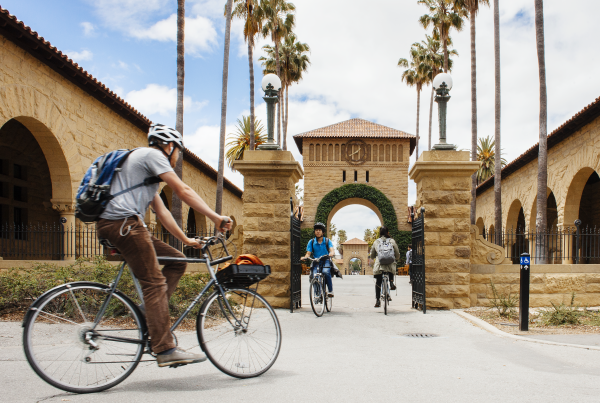How to Find the Best College for Your Money

When it comes to picking a college, the quest for value has taken center stage. Schools are handing out brochures touting their job-placement records (without much to back up the stats). New programs let you test your way to a degree for just a few thousand dollars. And so far this year, Americans have searched Google using the words “college” and “value” 1.1 million times a month, a 10% jump over 2014.
Even the government is getting into the act, or trying to. In June the Obama administration succumbed to two years of opposition from colleges and abandoned efforts to rate them based on value. Instead, it will simply launch web tools in the fall that will let you screen colleges by data such as tuition, graduation rates, and post-graduate success. Meanwhile, 2016 presidential candidates on both the left and the right are appealing to voters with promises of helping students graduate “debt-free” or get “workforce-ready” degrees.
The reason for this heightened focus on value is obvious to anyone who has priced out college recently. Even after accounting for the typical amount of financial aid and tax breaks, the total cost of a BA from a public university will come to about $75,000; at a private college the average family should budget for $115,000-plus. Not likely to be eligible for aid? That bill could top $250,000.
See Money's full Best Colleges rankings
The result: high anxiety among families about the value proposition of a college education. In a recent survey for CreditCards.com, 31% of adults reported losing sleep over college costs. “The debate has moved front and center as college has gotten more expensive,” says Rachel Fishman, an education policy analyst at think tank New America. “Students are investing all of this time and money in their future, and they wonder, What am I actually getting?”
To help parents and students answer that question, Money has once again set out to find great schools that are truly worth the investment. With our second annual Best Colleges rankings, we’ve identified more than 700 colleges that deliver a quality education that launches students on a successful career at a price your family can afford.

Mark Schneider, former head of the National Center for Education Statistics and current president of College Measures, collaborated with Money to develop the rankings, which evaluate the schools on 21 measures of educational quality, affordability, and career earnings. The careers website PayScale.com provided earnings data for the schools’ alumni, as well as analysis of those earnings based on what types of majors predominate at the schools. (You can find the full methodology behind our college rankings here.)
"The Farm," as Stanford students refer to their vast campus, grows high earners.
Coming in at No. 1 this year is Stanford University, where innovative teaching, generous aid policies, and average alumni earnings well above even Ivy League standards combine to give students an educational experience that shines on all counts. But our Best Colleges list also underscores that it’s not just elite institutions that can deliver a great education and a leg up in the workforce—at a price you can handle. Our rankings include many places that don’t typically show up on best lists, such as College of the Ozarks (No. 26), where students work in lieu of paying tuition, and Maine Maritime Academy (No. 8), a public college specializing in business, engineering, and marine biology. “A school’s name isn’t everything. Results are,” says Schneider. “You may be surprised that schools you may never have heard of will give you a better shot at success.”
As you browse our rankings, keep a few things in mind. Some of the data used to evaluate colleges are imperfect. The test scores of incoming freshmen are self-reported by colleges. The earnings estimates are based on voluntary surveys. Plus, schools within 20 or so places of one another are roughly the same, especially at the top. But paired with your own research and visits, these rankings can be a valuable guide to where your tuition will go the furthest.
The best-value colleges aren’t necessarily the cheapest. But studies show, and our rankings confirm, that key aspects of the college experience are worth paying more for. So as you set out to find the best college fit for your student, pay attention to these five important signs that a school is a true value.
1. Help Getting You to the Goal
At its most basic, the job of a good college is to enable students to get a degree, preferably in the four years that’s promised. Sounds simple, and yet it’s a high hurdle at many colleges—on average, only 39% of students graduate in four years. Even finishing in six—the standard gauge calculated by the federal government—can be a challenge.
With how much you’ve learned in college tough to judge, a school’s graduation rate is generally recognized as the most important measure of educational quality. In part, that’s because students who feel that a college is wasting their time will vote with their feet. But it also reflects a reality. “The best school you can go to is the best one you can graduate from,” says New America’s Fishman.
Graduation rates are also one of the most important predictors of later success. Less than 1% of students who attend the schools with the 100 highest graduation rates on our list default on their student loans. The default rate for the schools at the bottom of our list: 8%.
Check out the new Money College Planner
Reflecting the critical importance of this measure in the value equation, we put almost a quarter of our ranking weights on graduation rates. Graduation rates also figure prominently in another one of our measures: net price of a degree. That’s because when you need more time to graduate, college becomes even more costly. So our estimate for the net price of a degree takes into account the time it takes for students to graduate from that school, as well as typical financial aid awards.
How to spot value: The best schools graduate more than what’s average—65% at private colleges, 58% at public. Check on what support your student will get, including tutoring or counseling and enough spaces in required classes.
The career-focused majors at Robert Morris, such as nursing (above) and computer networking (top), pay off.
2. A Push to Exceed Expectations
You may be aiming for the best college your child can get into. But tours and marketing materials, not to mention data on the average student, won’t tell you if that college will do the best job with a kid like yours. That’s why Money developed what we call a value-added measure. We looked at how well students of a particular institution do in three key measures—graduation rate, student loan defaults, and post-college earnings—compared with schools whose students had similar high school grades and similar economic backgrounds as measured by the percentage of low-income students attending.
Our rankings reveal plenty of schools that give students a remarkable boost. Consider our No. 1 Value All-Star, Robert Morris University Illinois in Chicago, which accepts students with spotty high school records and graduates them at almost twice the rate of schools with similar standards. The small classes and personal attention from professors inspired Trevor Kimlick of New Paris, Ind., who graduated near the bottom of his high school class, to buckle down and focus on schoolwork and his career. He made the Dean’s list in his first semester, despite working more than 20 hours a week, and he graduated into a job he loves—as a planner for the Menards hardware store chain. While Trevor could have gone to a cheaper college, and he and his family will be paying off the tuition loans for many years to come, they say they got value for their dollars. “It was an investment” says Trevor’s father, Vincent.
How to spot value: Use our value-added grades as a screening tool. You can also look up graduation rates by race and gender at Collegeresults.org. Talk to students at the school who share characteristics with your student to see how they fare at the school.
3. A Blend of Practical Skills and Smarts
It’s a conundrum. Studying liberal arts typically makes it harder to find a good job out of the gate. But sticking to preprofessional coursework is risky too. Four years ago a rising freshman eager to qualify for a high-paying job might have majored in petroleum engineering. But he or she would graduate today into a job market in which oil companies are laying off thousands, notes Peter Cappelli, director of the Center for Human Resources at the Wharton School and author of the book Will College Pay Off? “Timing the job market is virtually impossible,” he says.
Saying you have to choose between a liberal arts and a preprofessional degree, though, “is kind of dumbing down the conversation. It’s not either/or. It is and,” says Brandon Busteed, executive director of Gallup’s education division. A school that balances academics with real-world practicality is the best value. In a 2013 Hart Research Associates survey, most employers said the most successful workers had both field-specific and broad skills and knowledge.
Read Money's full Best Colleges rankings
When Edlyn Wang told her high school friends she would be going to Babson College, one wrote in her yearbook, “Good luck at that college you made up,” the 2012 grad recalls. But Babson, a business school where about half the course load is liberal arts, has gained attention for its high-earning grads. The college was Money’s 2014 best value and ranks No. 2 this year. Wang, now a buyer for Ross Stores, says her mix of classes—financial analysis as well as writing—gives her an edge.
Overall, Babson alums report earning $60,100 within five years of graduation, more than $9,000 above the average for schools with similar students. (Almost a quarter of our rankings are tied to earnings.) Another measure of the value of the college experience is whether you leave campus with a network in place to help you navigate the hiring maze. Surveys by Jobvite, which makes résumé-screening software, find that personal referrals are recruiters’ best source of hires; 40% of workers say they got their best job from one.
How to spot value: Look for colleges that connect coursework to the real world, Cappelli suggests. “People learn best in the context of real problems,” he says. And you want a school that pushes a multidisciplinary approach, says Josh Jarrett, a former deputy director of postsecondary success for the Bill & Melinda Gates Foundation and co-founder of Koru, a job-training program. Techies need to practice writing and speaking. Poets need to develop financial skills.
Also favor schools that help you go from the classroom to the office. Gallup found that students who got internships in college were 50% more likely than those who didn’t to thrive professionally later. Employers offer nearly two-thirds of interns full-time jobs, a survey by the National Association of Colleges and Employers found. So ask how the school helps students land paying internships.
Career services staffing makes up 5% of our rankings—1.5 workers per 1,000 students is average for our list—and this year we also looked at whether a college has a program to connect job-seeking students with alumni, a good networking tool. Grads from the 116 schools on our list that don’t have such programs report salaries that are, on average, about $1,500 a year lower than those of schools that do.
Texas A&M has an unusually cohesive campus culture for big public university.
4. Face Time that Pays Off Now and Later
You’re not getting much bang for your buck if your kid fades into the back of a big lecture hall for most of college. “Mentorship from instructors is one of the most fundamental aspects of a good-value college,” says Busteed. In the largest-ever survey of the impact of college experiences on graduates’ lives, Gallup last year polled 30,000 American adults. Those who were happiest and most professionally successful were twice as likely to say they had a professor who “cared about me as a person” or “made me excited about learning.”
Money’s data on faculty caseloads and accessibility, which account for 5% of our rankings, confirm that this is crucial. The public colleges on our list with the least accessible faculty have graduation rates of 48%, 15 percentage points below the rates for schools with student-to-faculty ratios of no more than 15 to 1.
What’s more, recent graduates of the 100 private schools on our list with the largest class sizes reported earning about $42,000 a year. That’s about $6,000 less than what fresh grads of the 100 private schools with the best student-to-faculty ratios earn.
The school in our rankings where undergrads get the most attention—the California Institute of Technology (No. 5), which has an average of three students per professor—also happens to produce among the highest earners in the country (more than $72,000 a year).
Customize your own Best Colleges rankings
You don’t have to be a young Einstein to find small classes. The average student at Molloy College on Long Island, N.Y. (No. 105), scored at about the 60th percentile on the SAT or ACT. Yet the school reports one faculty member for every 10 students, vs. an average of nearly 12 for private colleges on our list. Schools that don’t make our rankings average a ratio of 22 to 1. Molloy graduates report earning an above-average $55,000 within five years, vs. $44,500 for all schools on our list.
How to spot value: For starters, zero in on class size. Lanier Mason, who graduated from Molloy in May, says he chose the school over better-known rivals after he saw that almost all the classes he’d take would have fewer than 30 students. “You get a lot of face time with professors. And being in a smaller group, you wouldn’t be so afraid to ask questions,” he says. Now a freshly minted accounting major, he credits attention from professors as the key reason he and his identical twin (also a Molloy accounting major) are both interning at accounting firm EY this summer.
Ask students about the faculty culture, such as how often professors see students outside the classroom, says Busteed. Cindy Ann Kilgo, a University of Iowa education researcher, suggests looking for opportunities to help professors with research.
5. Innovative Teaching Methods
While graduation rates say a lot about quality, what happens before you leave campus matters too. At some colleges professors don’t seem to light the fire of learning. In a longitudinal study of 2,300 members of the class of 2009 at 24 colleges titled “Academically Adrift,” 36% of seniors showed no real improvement in skills like critical thinking. Those who learned the least were twice as likely to be unemployed and living with their parents as the best learners were.
A value college will be one that both prods and inspires your student to learn. The best way to do that, a growing body of research shows, is to replace traditional lectures with “active” or “collaborative” learning. Especially powerful are classes in which professors give short presentations, assign small groups in-class problems, and offer immediate feedback. Students in such classes showed 10% greater growth in critical-thinking skills than those in traditional lectures did, a study by Kilgo of over 6,000 students at 47 institutions found.

That kind of teaching is the reason Money’s top value college—Stanford—is home to this year’s “professor of the year.” Sheri Sheppard was named the top professor at research universities by the Council for Advancement and Support of Education for her transformation of her engineering class.
Lectures in which the professor “opens up the lid of the student’s brain and pours stuff in,” says Sheppard, “don’t lead to deep learning as effectively as integrating what they are studying with action and feedback.” Sophomores in her Introduction to Solid Mechanics class bring their bikes in on the day she teaches how loads are transferred and design the gearing for a bike-share program. “It is somewhat chaotic,” she says. But it reflects the kinds of tasks the students will face at a job.
How to spot value: Classrooms can tell you a lot, says Kilgo. A good sign: Instead of lecture halls, you see rooms with movable chairs and tables and whiteboards. And ask what incentives professors have to improve their teaching. Remember: A school that gets your student enthusiastic about a lifetime of learning is an investment that will pay dividends for decades to come.
See the full Best Colleges rankings
Update: This story was updated from the August 2015 print edition of Money magazine to reflect new information about one of the students profiled.
